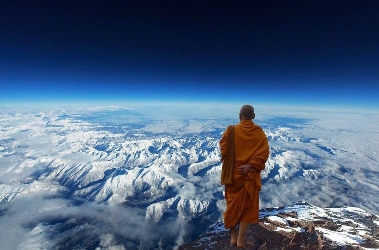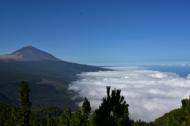 The idea that there are humans on Earth with ‘superhuman’ abilities is something that many of us consider exclusive to Hollywood movies.
The idea that there are humans on Earth with ‘superhuman’ abilities is something that many of us consider exclusive to Hollywood movies.However, if you were to take a little time to research and investigate, you’d come across a number of extremely interesting articles and texts which suggest that there are humans on Earth who can do the unimaginable.
Through the use of techniques known as siddhis—perfection in Sanskrit—which are meditation techniques including meditation, static dancing, drumming, praying, fasting, psychedelics, and more, people can unlock their potential.
When we think of yoga, Buddhism comes to mind, or at least it does for me. Curiously, in the ancient teachings of Buddhism, we find ample evidence of the existence of ‘extreme powers’, and Buddha expected that his disciples to attain these abilities, and live a peaceful and normal life.
A profesor of Buddhist and Tibetan Studies from the University of Michigan called Donald Lopez Jr, explained the many abilities attributed to Buddha and his teachings.
Professor Lopez indicates how “with this enlightenment, he was believed to possess all manner of supernormal powers, including full knowledge of each of his own past lives and those of other beings, the ability to know others’ thoughts, the ability to create doubles of himself, the ability to rise into the air and simultaneously shoot fire and water from his body.”
“Although he passed into nirvana at the age of eighty-one, he could have lived…”for an aeon or until the end of the aeon” if only he had been asked to do so.”
Evidence of ‘superhuman abilities’ can be found in numerous verifiable sources. For example, Swami Rama an Indian yógī—who is noted as one of the first yogis to allow himself to be studied by Western scientists—wrote in a book called Living with the Himalayan Masters:
“I had never before seen a man who could sit still without blinking his eyelids for eight to ten hours, but this adept was very unusual. He levitated two and a half feet during his meditations.”
Rama explains: “We measured this with a string, which was later measured by a foot rule. I would like to make it clear, though, as I have already told you, that I don’t consider levitation to be a spiritual practice. It is an advanced practice of pranayama with the application of bandeaus (locks). One who knows about the relationship between mass and weight understands that it is possible to levitate, but only after long practice…”
Rama notes how the monks had beyond fascinating abilities:
“He (also) had the power to transform matter into different forms, like changing a rock into a sugar cube. One after another the next morning he did many such things. He told me to touch the sand – and the grains of sand turned into almonds and cashews. I had heard of this science before and knew its basic principles, but I had hardly believed such stories. I did not explore this field, but I am fully acquainted with the governing laws of science.”
But evidence of these teachings can be found in countless books and ancient texts.
In modern times, we have a study performed by Harvard scientists who were left stumped but what they had found after visiting remote monasteries in the 1980’s.
Harvard Professor of Medicine Herbert Benson studied Himalayan Mountain monks who had the ability to raise the temperatures of their fingers by as much as 17 degrees, using a yoga technique called g Tum-mo.
Furthermore, studies performed in Sikkim India left experts stumped after they found that Monks had the ability to somehow lower their metabolism rate by as much as 64 percent.
Experts also discovered that Himalayan Monks had the ability to dry cold wet sheets with their body temperature alone.
Take into consideration that some of these monks live in extreme places, in Himalayan mountains at altitudes of 15,000 feet.

 Home
Home
 Add article
Add article
 Horoscope
Horoscope
 Music
Music
 Photos
Photos Video
Video
 TV online
TV online
